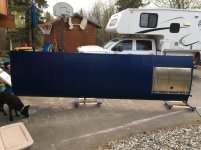mike mcs repair
Registered User
chugiak AK
Get ready to start laughing at questions from a first timer.
-Do Non Poly Fiber covering systems have a manual as simple and easy to follow as Poly Fiber? (If not, then they should create one. If they had one that created the same message/enviroment for covering, then they would sell more product.)
-Is it possible for a retard like me to use an MEK based system without self inflicted harm, or shortening my life span with a shop that is +100' from any other living space? I mean can I learn to use it safely, and are the safety directives easy to follow rather than laborious, and if I follow the easy simple safety directions will I live without it effecting my lifespan?
I live in my shop I spray in since 1997( well not really anymore, stay at girlfriends mostly now) set up a good fan and air source
Not gonna say I like mek get a good respirator and change cartridges occasionally I change after each plane
Sent from my iPhone using SuperCub.Org mobile app


















